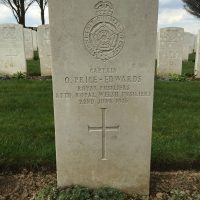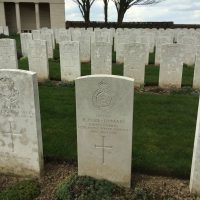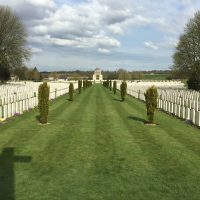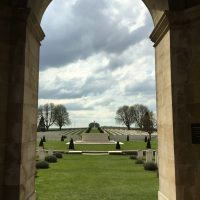Price-Edwards, O
(1882 - 1916)
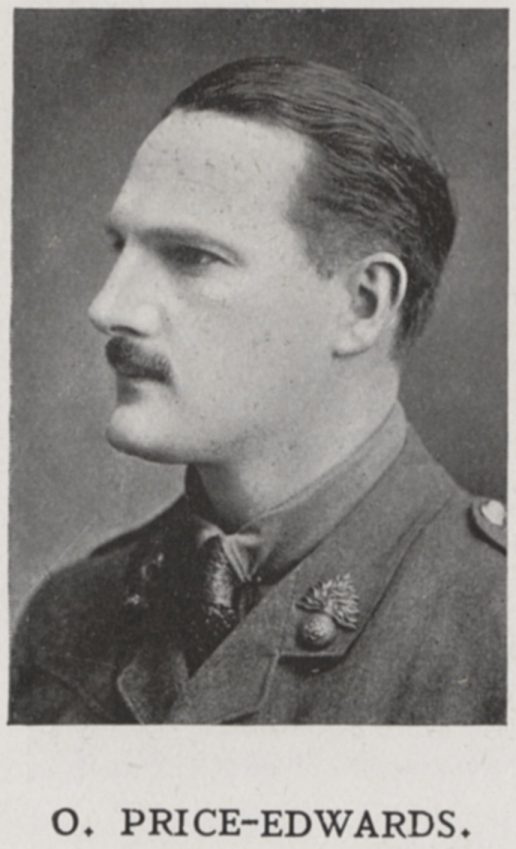
Key Facts
DATE OF BIRTH:
26th January 1882
YEARS ATTENDED THE COLLEGE:
1895 - 1899
HOME ADDRESS WHEN AT THE COLLEGE:
Berwyn, Langley Park Road, Sutton
REGIMENT
18th (Public Schools) Battalion, Royal Fusiliers
FINAL RANK:
Captain
DATE OF DEATH:
22nd June 1916
AGE AT DEATH:
34
WHERE HE DIED (or was wounded)
Givenchy
LOCATION OF GRAVE OR MEMORIAL:
Cabaret-Rouge British Cemetery, Souchez. XXXI B 3
Captain Owen Price-Edwards
Born on January 26th 1882, Owen was the middle of five children, of whom he was the only boy, born to Edward Price-Edwards, principal clerk at Trinity House, and his wife, Mary. He joined Dulwich at the beginning of 1895 and, by the time he left at the end of 1899, was a prominent figure in many aspects of College life. He spent his final two years as a member of the 1st XV, and in his final year was also an editor of The Alleynian, as well as winning the long jump. After the College he went into the City before, upon his father’s death in 1904, taking what had been his position at Trinity House. Outside of his career he was a keen member of the OAs, also making several appearances for the Surrey XV, and was described as having “a very powerful hand-off… at wing three-quarter”; in addition, he continued to be a frequent contributor to The Alleynian.
Not long after the commencement of hostilities Owen enlisted as a member of the University and Public Schools Battalion, Royal Fusiliers, and was granted a commission shortly afterwards. In autumn of 1915 he went out to the front for the first time, attached to the 2nd Battalion, Royal Welch Fusiliers, and was promoted to Captain in January 1916. He and his unit were involved in a protracted engagement with the Germans near Givenchy Hill, culminating on June 22nd 1916, when the Germans detonated one of the largest mines of the whole war to that point under the British lines. Owen, along with many of the Welch Fusiliers, was killed – the crater left by the explosion would become known as Red Dragon Crater in honour of the regiment’s cap badge – his body was discovered ten years later, in 1926, and reburied in Cabaret-Rouge British Cemetery.
